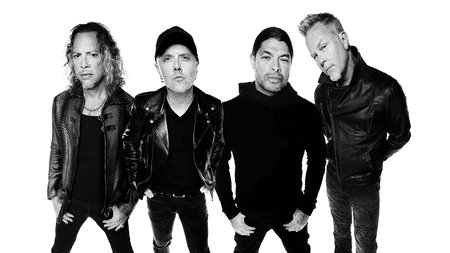
Metallica holds a legendary and foundational place in music, especially within the heavy metal and hard rock genres. Here’s a breakdown of their impact:
🎸 Pioneers of Thrash Metal
Metallica was one of the “Big Four” of thrash metal (alongside Slayer, Megadeth, and Anthrax). Their early albums, especially Kill ‘Em All (1983), Ride the Lightning (1984), and Master of Puppets (1986), helped define the thrash metal sound: fast, aggressive, and technically complex.
🌍 Mainstream Breakthrough
With The Black Album (1991), featuring hits like “Enter Sandman” and “Nothing Else Matters,” Metallica crossed into the mainstream. This album sold over 30 million copies globally and made metal more accessible to a wider audience.
🏆 Cultural and Critical Acclaim
Inducted into the Rock & Roll Hall of Fame in 2009.
Consistently ranked among the greatest rock bands of all time by Rolling Stone, Kerrang!, and others.
Won numerous Grammy Awards and other accolades.
🔥 Longevity and Influence
Metallica has stayed relevant for over four decades, with new albums, massive world tours, and global fan loyalty.
Their music influenced countless bands across metal, rock, punk, and even classical music scenes.
They’ve collaborated with diverse artists, from Lou Reed to symphony orchestras.
🎤 Legacy
Metallica didn’t just make metal popular—they elevated it into a form of serious, artistic expression. Their influence reaches far beyond metal, making them one of the most important and enduring bands in modern music history. If you want to play Metallica chords we have the perfect place to go!
What separated Metallica and launched them into stardom was a combination of musical innovation, raw energy, and a relentless work ethic—but a few key elements truly defined their rise:
1. Pioneering Thrash Metal
Metallica fused the speed and aggression of punk with the technicality of British heavy metal (like Iron Maiden and Motörhead) to help define the thrash metal genre. Their early records—especially Kill ‘Em All (1983) and Ride the Lightning (1984)—set a new standard for intensity and complexity in metal.
2. Sophisticated Songwriting
While many early thrash bands leaned on speed alone, Metallica incorporated:
Complex structures (e.g., multi-part songs with intros, bridges, solos, and time signature changes)
Lyrical depth (touching on war, inner turmoil, politics, and existential dread)
Memorable riffs (James Hetfield’s rhythm guitar work is among the tightest and most influential ever)
3. The “Black Album” Breakthrough
1991’s Metallica (The Black Album) took them from metal heroes to mainstream superstars. They slowed down the tempo, focused on groove and accessibility (Enter Sandman, Nothing Else Matters), and benefited from polished production. This album crossed over to non-metal audiences without abandoning their core.
4. Unrelenting Touring and Fan Connection
They toured relentlessly, building a massive global fanbase through grassroots loyalty—long before social media. They earned respect by not selling out too early, and when they did make changes, they did so on their own terms.
5. No-BS Image
They were raw, gritty, and anti-glam. At a time when MTV was flooded with hair metal bands in makeup, Metallica wore jeans, black shirts, and scowls. That authenticity spoke volumes.
In Summary:
Musical innovation, fearless evolution, powerful songwriting, and a grounded yet rebellious attitude are what elevated Metallica from the underground to global rock legends.
